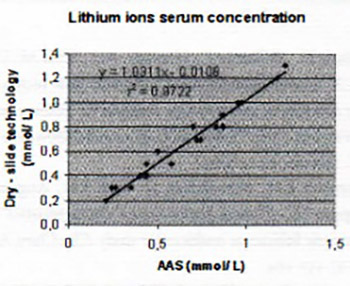Comparison of Vitros Dry Slide Technology for Determination of Lithium Ions with Other Methods
DOI:
https://doi.org/10.17305/bjbms.2006.3191Keywords:
dry slide technology, AAS, ISE, lithiumAbstract
The lithium ions concentration in human serum was determined using Dry-slide technology Vitros 250 Analyser (Ortho Clinical Diagnostic), atomic absorption spectrometry (AAS) method Perkin Elmer 403 and ion-selective electrode (ISE) potentiometry AVL 9181. We compared lithium ions results in sample sera between these methods. Our reference method was AAS. We analyzed lithium ions concentration in 23 sera samples of patients after oral administration of lithium carbonate (3x 300mg) Jadran, Galen Laboratory Rijeka, by dry-slide technology, AAS and ISE methods. The quality control, precision, reproducibility and accuracy for Vitros dry slide technology were assessed. We established that the main difference between AAS method and dry slide technology was not statistically significant at p< 0.05 according to Student t-test. Therefore, the dry slide technology may be a useful alternative or it may even replace other methods, such as AAS. The main difference between dry slide technology and ISE methods was statistically significant at p<0.05 using Student t-test. By ISE method, we obtained considerably higher results, which may be explained by the presence of electrolytes or medicaments interfering with lithium ions.
Citations
Downloads

Downloads
Published
How to Cite
Accepted 2018-02-14
Published 2006-05-20









